Nepal, Bangladesh, Sri Lanka, and Pakistan: Opportunities for Recruitment in South Asia
Deepti Mani, Research Associate, World Education Services
In response to declining international student enrollments on college campuses in the United States, higher education institutions are recognizing the need to identify new recruitment opportunities. Four countries in South Asia—Nepal, Bangladesh, Sri Lanka, and Pakistan—are worth a closer look. All four have sent growing numbers of international students to the U.S. since 2015/16, bucking broader trends (see Figure 1)
Moreover, all four have large and growing youth populations and burgeoning economies, which bodes well in terms of the countries prospects as pipelines for international students over the long term. This article looks at the potential of these four emerging markets, and offers advice and insights from international enrollment management professionals.
Nepal
In 2018 the ICEF Monitor noted, referencing data from the Institute of International Education (IIE) 2017 Open Doors report, that Nepal is a leading source of South Asian students in the U.S., second only to India. The number of enrolled Nepalese students on U.S. campuses rose from 9,662 in 2015/16 to 11,607 in 2016/17—an increase of 20 percent1 in just one year.
Nepal’s growth as a sending country
In general, growing numbers of Nepalese students are going abroad: 44,255 pursued their college education outside of Nepal last year, according to the most recent data estimates from UNESCO Institute for Statistics (UIS). Thirty-three percent went to Australia; other top destination countries included India, Japan, the United Kingdom, and Finland. About 18 percent of outbound Nepalese students went to the U.S.
This growth trend has been upward for the past five years, since 2012 when 29,460 Nepalese students left their home country to pursue their education. The number has gone up nearly every year—increasing by nearly 15,000 students in 2017, as estimated by UIS.
Driving this demand for higher education are the usual suspects: an expanding economy (the Asian Development Bank projects that Nepal’s gross domestic product (GDP) will increase by 4.9 percent in 2018 and 5.5 percent in 2019), a massive youth population, and an inadequate higher education system. As noted in the April 2018 issue of this publication, “The country’s population is becoming more affluent and is growing—the government expects the population to increase from 29 million to 33.6 million by 2031.“
Nepalese newspapers including the Kathmandu Post—along with some research findings—suggest that a domestic failure to tie higher education to employment outcomes may also be at play. “… many of our students obtain degrees not knowing what to do after graduation,” the Post noted in a 2017 opinion piece that explores the trend of Nepalese students going abroad and the need to bring them back.
Recruitment landscape in the region
Alternative recruitment strategies are key to recruitment success in Nepal. As Nepal recovers from a recent earthquake, the country remains difficult to get around, access to electricity and water continues to be a challenge, and infrastructure can best be described as underdeveloped. Because of difficulties traveling, particularly to remote areas, Linden Educational Services Managing Director JoBeth Brudner recommends developing a robust social media strategy to reach them. She also advises managing recruitment activities from a centralized location, such as Kathmandu.
Dane Rowley, director of international admission at California Lutheran University, sees an immense benefit for recruiters in establishing partnerships on the ground with organizations like EducationUSA and the United States Educational Foundation in Nepal. These partnerships can provide an effective way to develop a recruitment portfolio and establish the institution’s name locally, he says.
Brudner notes that courses in science, technology, engineering, and mathematics (STEM) are “true winners” with Nepalese outbound students (see Figure 2). However, she also mentioned the increased popularity of courses in renewable energy, which students seem to be more drawn to since the earthquake. She added that tourism and travel are other in-demand courses since Nepal is a popular tourist destination.
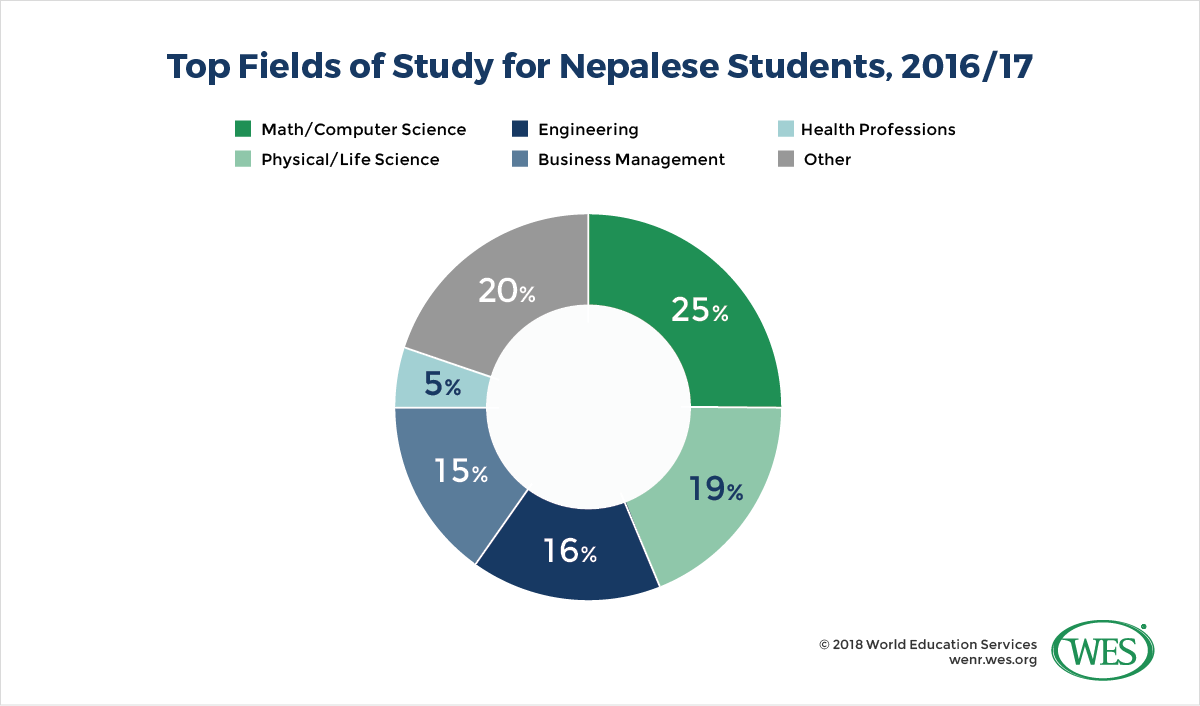
Figure 2. Source: IIE Open Doors, 2017
Finally, since outbound student mobility trends are expected to continue (see Figure 1), the influence of scholarships on enrollment numbers cannot be overemphasized. Linden Executive Director John Williamson notes that institutions that keep this in mind while planning their recruitment trips will have a substantial advantage.
Bangladesh
IIE’s 2017 Open Doors report recorded that 7,143 international students came to the U.S. from Bangladesh in the 2016/17 academic year, an increase of 9.7 percent in enrollment numbers over the previous year.
According to UIS estimates, 60,390 Bangladeshi students traveled abroad for their tertiary education in 2017. More than half—34,000—went to Malaysia; other top destinations that received at least 1,000 Bangladeshi students were Australia, the UK, Canada, Germany, and India.
Last year’s estimated numbers mostly continue the five-year trend of greater Bangladeshi outbound mobility: 49,940 students went abroad to study in 2012, and each year outbound numbers rose except for last year, increasing the percentage of Bangladeshi students abroad by 21 percent.
In line with these findings, the British Council named Bangladesh among the fastest growing tertiary enrollment education systems, projecting 700 thousand tertiary enrollments from the nation by 2020.
Bangladesh’s growth as a sending country
Like Nepal, Bangladesh struggles with some key challenges: Poverty is still a major issue, and efforts to reduce it have slowed in recent years; agriculture employs nearly half of all Bangladeshis; and the graduates of low-quality domestic institutions face challenges finding gainful employment.
However, as a recruitment market, Bangladesh has several advantages: It has a large youth population and a rapidly growing economy, particularly in Dhaka and Chittagong. It is the eighth most populous2 country in the world; more than 19 percent of its 160 million people are between the ages of 15 and 24. These factors alone suggest a strong potential for Bangladesh to become a potent source of international students over the long run.
Bangladesh also has a rapidly developing middle class, but lack of capacity in the higher education system means that there are not enough seats to meet the demands of a rapidly growing population. This tension also makes Bangladesh a country ripe for increased outbound mobility and recruitment.
Recruitment landscape in the region
Brudner, managing director of Linden Educational Services, advises that recruiters maintain a “rotating presence” and visit Bangladesh often. Williamson notes, “nothing helps more than being able to bring the context of the country to the student and their families.”
Sri Lanka
According to UIS data, the U.S. is second only to Australia as a study destination for Sri Lankan students. Of the 18,520 estimated Sri Lankan students that went abroad for their education last year, 33 percent went to Australia and 15 percent, to the U.S. IIE reported that the number of Sri Lankan students to the U.S. grew 5.9 percent in the 2016/17 academic year over the previous year.
Other top destinations for Sri Lankan students include the UK, Malaysia, and India. UIS data also show consistent though comparatively incremental growth over time: 16,314 Sri Lankan students sought higher education abroad in 2012; in 2017, an estimated 18,521 did—an increase of 14 percent.
Sri Lanka’s growth as a sending country
As noted by this publication in 2017:
Sri Lanka has a significant diaspora tradition, with large numbers of Sri Lankans living and working abroad either as skilled or unskilled professionals, mainly in Canada, France, India, and Australia, as well as throughout the Middle East. As one 2014 Australian government report [noted], in Sri Lanka “a strong local culture of migration has developed whereby migration – especially international migration – is entwined with prosperity; migration is seen as a normal way to improve one’s economic situation or a means to navigate a crisis.”
Many Sri Lankan youth reportedly view migration or international schooling as an opportunity to enhance their employment prospects, and Sri Lanka’s tertiary-level student population is quite mobile – in part because higher education in Sri Lanka has insufficient capacity to address student demand, especially at the undergraduate level. According to a 2013 University World News report, Sri Lanka’s 15 state universities admit “only 23,000 students … annually, out of the 220,000 who sit the university entrance (A-Level) examination every year.” That same year, some 12,000 Sri Lankan students reportedly sought university education abroad.
The limited capacity of Sri Lankan HEIs is driving students to seek higher education abroad. The growing youth population has continued to put additional capacity pressure on the country’s existing HEIs; as a result, the government has been encouraging students to study abroad.
While it is undeniable that the lure of attending a world-renowned U.S. HEI is one of the primary attractions for Sri Lankan students, the huge Sri Lankan presence in the U.S. and enhanced employment prospects are other notable pull factors.
One of the biggest challenges to recruitment in Sri Lanka is the country’s low spending on education as a percentage of GDP (see Figure 3), currently only USD$3,842, putting a U.S. education out of reach for the vast majority of Sri Lankans. With a GDP growth rate projected to reach 5.2 percent by 2020, however, the number of Sri Lankans willing to pursue a U.S. degree will most likely grow.
Recruitment landscape in the region
California Lutheran University’s Rowley notes that prospects are strong for community colleges and institutions that offer scholarships to international students.
The “best way to break into the [Sri Lankan] market will be to seek out opportunities to build institutional agreements for a transfer model,” he said. In light of this recommendation, it’s good news that the country has been making economic strides and showing marked signs of political stability. With China asserting its presence in Sri Lanka’s local business economy, the country will likely gain traction with international recruiters, Rowley said.
Colombo is the capital of Sri Lanka, but the city of Kandy is a rapidly evolving economic hub. Initiatives led by Strategic Cities Development Programme are designed to make Kandy a modern, sustainable city. Brudner recommended that recruiters leverage the city’s up-to-date infrastructure by “planning cultural activities” there during tours, to show students how getting to know them and their country is a priority.
As seasoned recruitment experts begin to plan their foray into Sri Lanka, it is important to note the growing appeal of courses in more creative fields such as digital communications, digital marketing, and TV and film, as well as the tremendous potential in fields like healthcare management and hospital administration, Rowley suggests.
Pakistan
Pakistan’s “promising growth” makes it a country to watch for recruitment, according to Megan Mankerian-Stem, director of international enrollment at Creighton University. Her assessment echoes that of the British Council, which has identified Pakistan as one of the fastest growing outbound student populations.
The percentage of students going to the U.S. from Pakistan increased 14.2 percent for the 2016/17 academic year. The most recent data from UIS rank the U.S. as the third most popular destination for Pakistani students, receiving 10 percent of the 51,894 students who went abroad. Only Australia and the UK educate more students from Pakistan. Other top destination countries include Malaysia, the United Arab Emirates, Saudi Arabia, Germany, and Canada, each of which educated at least 2,000 Pakistani students.
The quality of the higher education system is one reason behind this outflow. For instance, as the Diplomat Magazine noted in 2016, “Over the last decade, there has been a tremendous rise in the number of private educational institutions in Pakistan. However, the quality of education that these institutions offer has dropped significantly. A month ago, the Higher Education Commission (HEC), Pakistan’s education regulatory body, shut down dozens of PhD programs in a number of universities across the country. Reportedly, the universities failed to meet the minimum quality criteria required of higher education institutions.”
Moreover, major projects like the China-Pakistan Economic Corridor (CPEC), “a [USD] $62 billion connectivity project [that will],” according to the U.S.-based Wilson Center, “stretch from the western Chinese city of Kashgar to Pakistan’s Arabian Sea port of Gwadar” have created demand for, in the words of Zamir Awan, a professor and trade expert at Pakistan’s National University of Sciences and Technology, a “well-educated, well-trained workforce” that Pakistani universities are currently ill-equipped to supply.
Pakistan’s growth as a sending country
Lack of capacity in the higher education sector represents a significant challenge for the country’s 18- to 22-year-old population, which is projected to increase by 900,000 over the next 10 years. Mankerian-Stem, who visited the country this past February as part of an EducationUSA tour, noted that rising prosperity in Pakistan, will diminish as a barrier for some families. However, scholarships will continue to remain vital for the successful recruitment of Pakistani students, she emphasized, noting the twofold benefit to the institution and the student in terms of enrollment numbers and financial assistance, respectively.
Families who value a U.S. degree see it as a guarantee and strive to support their students’ efforts to attain one, Mankerian-Stem said. According to UIS data estimates, the outbound growth trend is undeniable: 39,314 Pakistani students left their home in 2012; in 2017, an estimated 51,894 went abroad to pursue their education, a 32 percent increase.
While the current political climate has made it challenging to recruit students from Pakistan, the inbound numbers to the U.S. offer some encouragement. Students and their families are still eager to learn about opportunities in the U.S., and efforts made now will go a long way in the future. Mankerian-Stem explained that branding is critical now, and that it is important to show how welcoming and safe U.S. HEIs are.
Recruitment landscape in the region
“With competition to recruit getting tougher every year, travel to international destinations ought to be maintained to attain strong recruitment numbers,” said Mankerian-Stem. She was quick to add that as recruiters prepare to visit in country, they should be ready to serve as goodwill ambassadors of their institutions and think of creative ways to market themselves. She advised that families in Pakistan seem particularly interested in the ability to double major in the U.S.
Director of International Recruitment at Southern New Hampshire University Jenna Sices “absolutely recommends” Pakistan to fellow recruiters; she also advised that merit-based scholarships are of particular interest to Pakistani students.
Like Mankerian-Stem, Sices visited the country in February as part of the EducationUSA tour. She urged recruiters to focus on the STEM fields but also to recruit for emerging areas of interest like law, psychology, sociology, and political science; and to target the cities of Karachi, Lahore, and Islamabad.
Finally, regarding the future of recruitment in Pakistan, Mankerian-Stem stated, “Students are hungry for information on U.S. HEIs.”
Looking Ahead
Despite declining international enrollment in U.S. colleges, a prestigious U.S. degree is still a draw for students around the world; however, institutions must continue to seek out new territories. Creating pipelines within South Asia now will give schools an advantage over their competitors.
“As recruiters turn to markets with a rising middle class,” Rowley said, “it is immensely vital to keep the perspective clear.” Institutions should focus not only on filling seats, but also on creating a diverse class of students in conjunction with a thorough recruitment process that admits students who are an excellent fit for the school.
1. Source: IIE Open Doors Report, 2017
2. http://monitor.icef.com/2018/03/factors-driving-growth-bangladeshi-outbound/
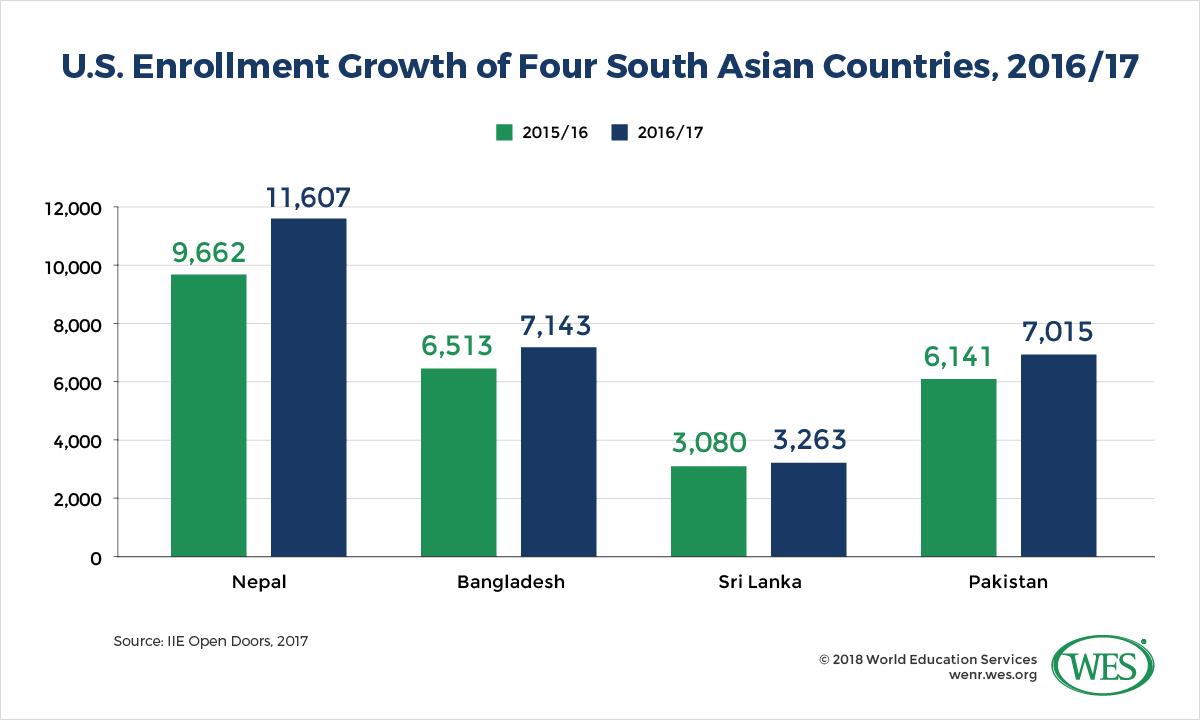
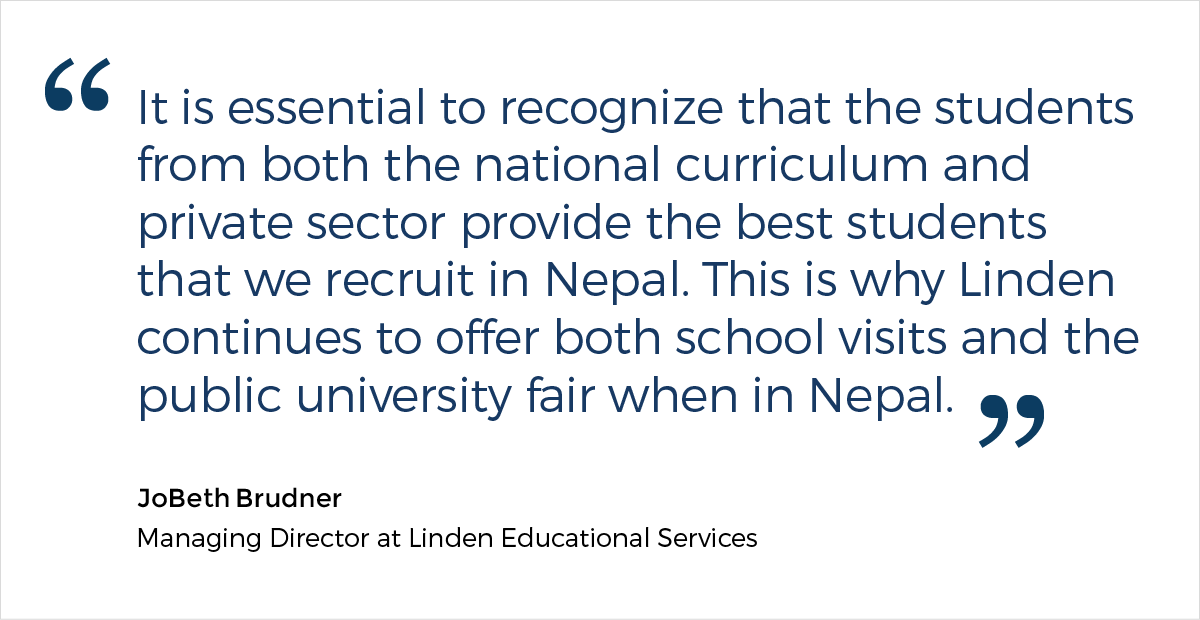
![A quote from Dane Rowley, the Director of International Admission at California Lutheran University, who says: "There is a great hunger for U.S. higher education, especially among [Nepalese] high fliers who are in need of funding. Scholarships can truly be a game changer."](https://wenr.wes.org/wp-content/uploads/2018/09/WENR-0918-Beyond-India-4.png)
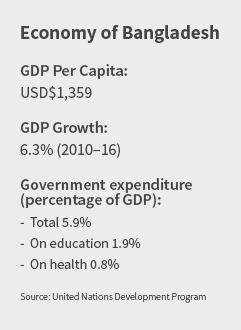
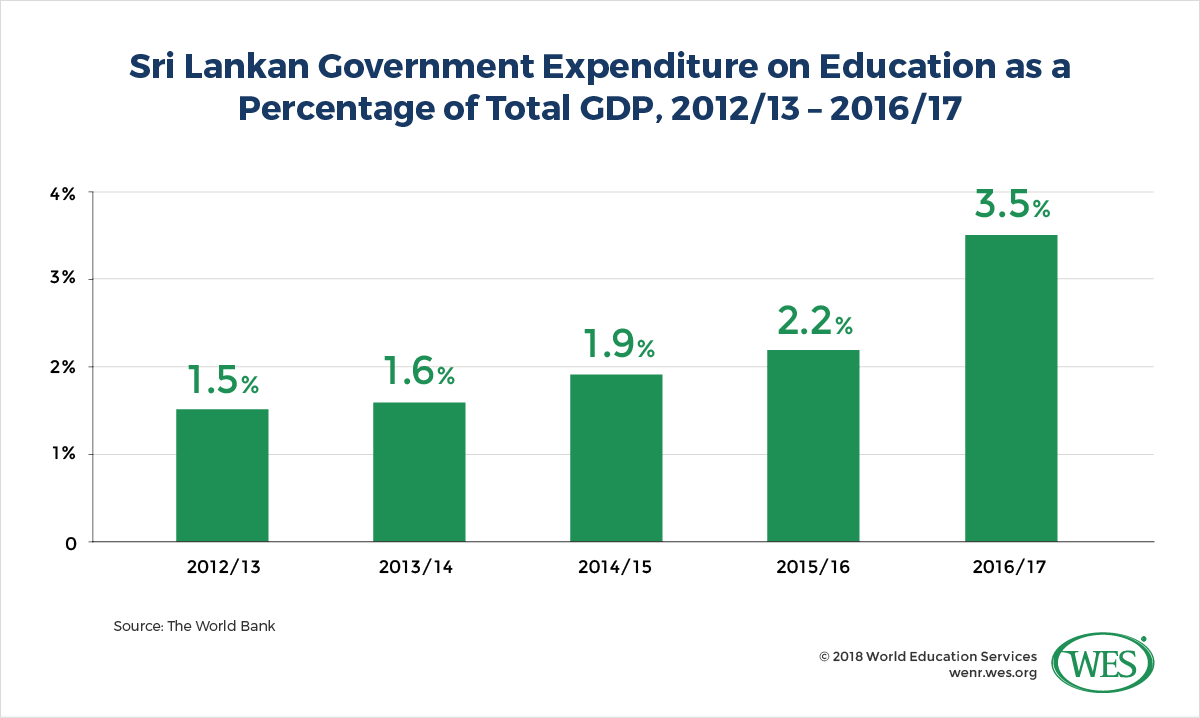
![A quote from Megan Mankerian-Stem, the Director of International Enrollment at Creighton University, who says: "It is really about relationship building in Pakistan, and this is [generally] true of the region of South Asia. Things don't work there as they do here [in the U.S.]."](https://wenr.wes.org/wp-content/uploads/2018/09/WENR-0918-Beyond-India-6.png)